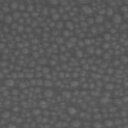Identification of absorbed constituents in the rabbit plasma and cerebrospinal fluid after intranasal administration of Asari Radix et Rhizoma by HS-SPME-GC-MS and HPLC-APCI-IT-TOF-MSn.
Słowa kluczowe
Abstrakcyjny
Traditional Chinese Medicine (TCM) nasal therapy has been utilized to treat numerous diseases for over two millennia. It has many advantages compared with other routes. In this article, headspace-solid phase microextraction-gas chromatography-mass spectrometry and high performance liquid chromatography-atmospheric pressure chemical ionization-ion trap-time of flight-multistage mass spectrometry were applied for the first time to analyze the absorbed constituents in rabbit plasma and cerebrospinal fluid (CSF) after intranasal administration of Asari Radix et Rhizoma (AR). In total, 47 absorbed AR constituents including 14 monoterpenes, 10 phenylpropanoids, four benzene derivatives, two alkanes, nine N-alkylamides and eight lignans were tentatively identified in the rabbit plasma and CSF. Thirty-three absorbed constituents are found to have different bioactivities related to the pharmacological actions of AR through bibliography data retrieval. These indicated that many types of constituents of TCM can be absorbed at the nasal cavity into both rabbit blood and CSF. This is the first study to explore the absorption of AR, and comprehensively analyze the absorbed constituents after intranasal administration of TCM. These findings extend our understanding of the effective substances of AR, and inspire us to make a hypothesis on the mechanism of additive effect of multiple constituents of TCMs, which is very worthy of further investigation.



